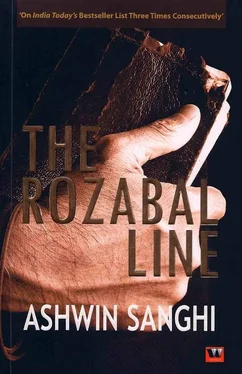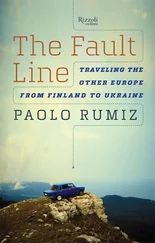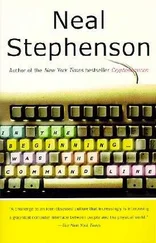The mourners carried his body to the burial ground where the Imam began reciting the funeral prayers, the Salat-i-Janazah. Prayers over, the men carried the body to the gravesite. Rashid’s body was laid in the grave without a coffin, as per custom, on his right side, facing Mecca.
Standing by the grave was little ten-year-old Ghalib, tears streaming down his cheeks. The Imam placed his hands on Ghalib’s shoulders and said, ‘Son, you should not cry. You are the son of a hero. Your father’s death was not in vain. You will avenge his death. Henceforth, you shall not shed tears. You shall shed blood!’
Little Ghalib was confused. How could he possibly take revenge? He was merely a ten-year-old boy.
‘Come with me, my son,’ said the Imam, and taking Ghalib by the hand he led him to the mosque. The next day, the Imam journeyed across the Line of Control to get to Muzaffarabad on the Pakistani side of Kashmir. Here the boy was enrolled into the Jamaat-ud-Dawa Madrasah, an Islamic school of learning.
The lanky, olive-skinned Imam wearing a simple white turban bid him goodbye. ‘See me after you have completed your studies,’ he said simply.
Muzaffarabad, Pakistan, 1986
During the next few years in Pakistan, Ghalib would go through two separate courses of study. In the Hifz course, he would memorise the holy Qur’an. In the ’Aalim course he would study the Arabic language, Qur’anic interpretation, Islamic law, the sayings and deeds of the Prophet Muhammad, logic and Islamic history. At the end of his study, he would be awarded the title of ’Aalim, meaning scholar.
One day, when he was in his Islamic history class, his teacher told them about the Islamic conquests of India.
‘The first was the invasion by Mohammed-bin-Qasim from Syria in the seventh century. This was followed by the eleventh-century incursions of Muhammad of Ghazni. Ghazni was followed by Mohammed Ghori, who left India to be ruled by his Turkish generals. Then came the attacks by the Mongol hordes of Chenghiz Khan. Then, in A.D. 1398, came one of the most successful attacks of all, under the Mongol Taimur,’ continued the teacher. [9]
Little Ghalib argued, ‘But none of these people stayed in India. They were mostly interested in looting rather than ruling.’
Whack! The cane was swift on his palm.
‘You must never say that again. Babar, Taimur’s descendant, invaded India in 1526 and established Mughal rule over India for the next 300 years. In fact, it was God’s will that India be ruled by Muslims. Till then, Hindus had continued to indulge in idolatry. The Muslim invasions made them realise the greatness of Islam!’
‘So why do Muslims not rule over Kashmir today?’ asked Ghalib.
‘This is the reason that you must fight,’ explained the teacher. ‘It is your duty to do so. Fight a jihad to restore Islamic rule over Kashmir and then over the whole of India! Allah-o-Akbar!’ he shouted.
‘Allah-o-Akbar!’ shouted the children in unison, including little Ghalib.
Waziristan, Pakistan-Afghanistan border, 2010
The lanky, olive-skinned Imam wearing the simple white turban who had escorted the ten-year-old was now Ghalib’s controller. Everyone simply called him ‘Sheikh’.
He was sitting on an intricately woven rug inside his cave in Waziristan, located on the Pakistan-Afghanistan border.
On his right sat Ghalib-bin-Isar, the thirty-five-year-old leader of the Lashkar-e-Talatashar. He was here with his army of the dirty dozen.
The host first looked at Ghalib. He then swept a glance over Ghalib’s men-Boutros, Kader, Yahya, Yaqub, Faris, Fadan, Ataullah, Tau’am, Adil, Shamoon, Yehuda and Fouad. Each of these veterans had crossed the Khyber Pass from different parts of the world and had enrolled in the Khalden Camp run by Al-Qaeda as fresh recruits, who were now toughened and battle-ready.
Khalden was a mishmash of tents and rough stone buildings. It used to take in about a hundred recruits at a time. Each group consisted of Muslims from Saudi Arabia, Jordan, Yemen, Algeria, France, Germany, Sweden, Chechnya and Kashmir. Ironically, the Al-Qaeda Khalden Camp was using teaching and training methods originally adopted by the American CIA in training the Mujahideen guerrillas to fight the Soviets. [10]Even text books-in Arabic, French and English-on terror techniques had been made available to the recruits, courtesy of the CIA.
Each morning at Khalden, the group would be called to parade and then asked to pray. After the morning meal, they would go through endurance training followed by strength training. They would also be taught hand-to-hand combat using a variety of knives, alternative forms of garrottes and other weapons. They would learn to use small firearms, deadly assault rifles and even grenade-launchers. The science of explosives and landmines was also part of their study. Representatives of Islamic terror groups, such as Hamas, Hezbollah and Islamic Jihad would regularly visit the camp in order to teach the recruits more about the practical applications of their knowledge.
The final result of the efforts at the Khalden Camp had been this elite Army of Thirteen, the Lashkar-e-Talatashar. The Sheikh was happy with the output.
These men would help the Sheikh’s Master teach the whole world of infidels a lesson that they would not forget. The 9/11 attack on America in 2001 would seem like a tea party in comparison. The Sheikh’s Master was convinced that it was time to re-establish the supremacy of the Islamic Caliphate.
The Sheikh wondered how it would affect the Crux Decussata Permuta.
Osaka, Japan, 1972
Pink Floyd performed live at the Festival Hall in Osaka on 9 March. Among those in the audience was a pretty young woman, Aki Herai. She had a job in the large Daimaru store in the Shinsaibashi district of the city but was now on leave because she was eight months pregnant. The concert tickets were a present from her friends at the store. The delicate subject of the child’s father was never discussed.
Pink Floyd’s Dark Side of the Moon was a big hit with the Japanese youth attending the concert. The show was reaching its finale when Aki felt her water break. Her friends rushed her to Osaka National Hospital, where the doctors performed an emergency caesarean section.
Her daughter, Swakilki, arrived six weeks short of a normal forty-week pregnancy. Luckily she weighed five pounds, was 12.6 inches tall, and had fairly well-developed lungs, enabling her to survive.
On Swakilki’s sixth birthday, her mother threw a party. Aki entertained the guests inside the cramped shoebox home while one of her friends took little Swakilki to the garden for some fresh air. As the woman cuddled the little girl in her arms, she felt the shock from the hot blast that ripped through Aki Herai’s home.
The cause of the explosion would later be diagnosed as an accident-a gas leak.
It was a gas leak; an accident, it was not.
Yes, Swakilki was indeed a survivor-born without a father, and alive without a mother.
Tokyo, Japan, 1987
Orphaned at the age of six, Swakilki had been transferred to the Holy Family Home, an Osaka orphanage run by kind, gentle and caring nuns. She would spend the next six years here.
During these six years she would eagerly await the monthly arrival of one of the jovial and rotund Fathers from Rome. His name was Alberto Valerio, and he would always bring her candy. For Swakilki, he was her Santa Claus.
She was one of the ‘lucky’ ones to get adopted at the age of twelve by a fairly well-off couple in Tokyo. What she could not have known was that the adoption would come at a price. Little Swakilki was abused and raped by her adoptive father at the age of fourteen; he told her it was their ‘special little secret’.
Читать дальше












